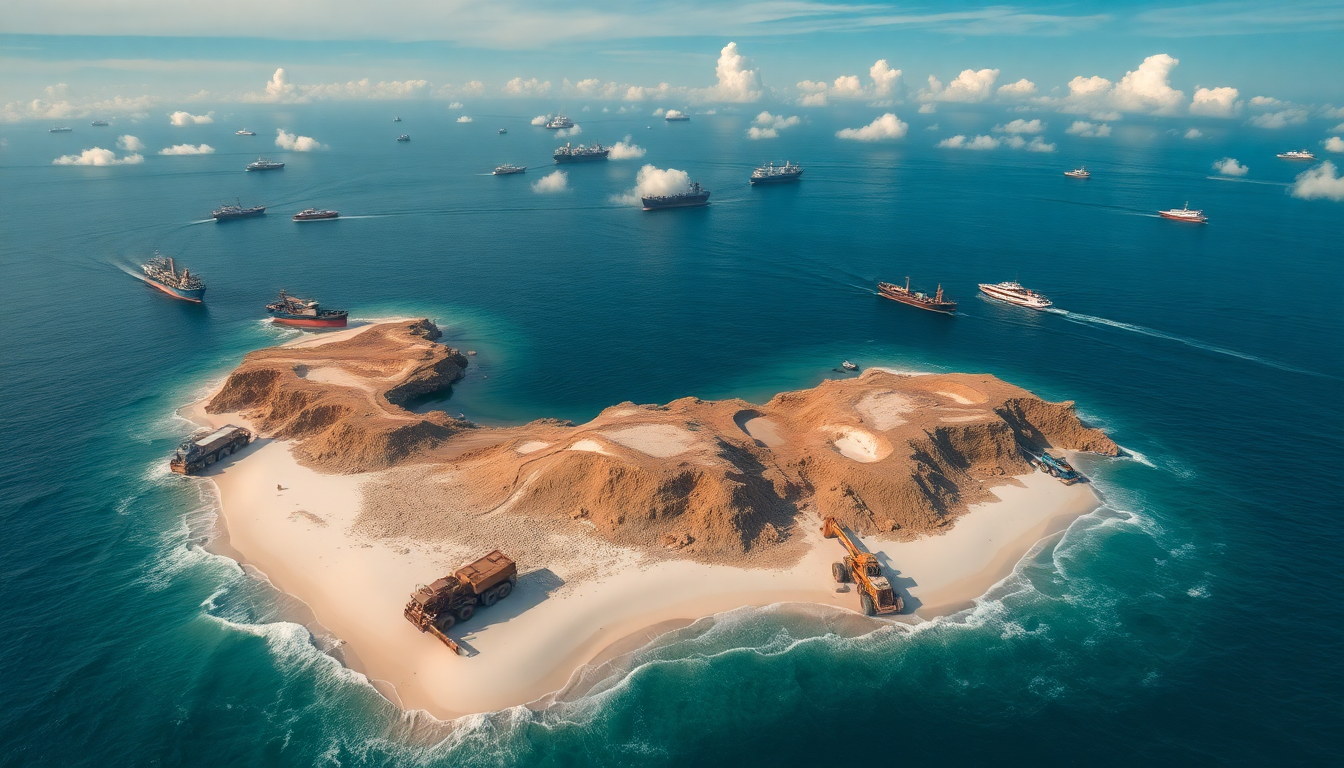Table of Contents
Have you ever wondered how nations assert their claims over disputed waters? Recent satellite imagery has uncovered some surprising developments in Vietnam’s island reclamation efforts in the hotly contested South China Sea. As tensions rise in this vital region, Vietnam’s activities highlight a broader strategy aimed at boosting its territorial claims and military presence. Let’s dive into what these reclamation projects mean for the geopolitical landscape and regional stability.
Overview of Vietnam’s Reclamation Activities
According to a recent report from Washington’s Centre for Strategic and International Studies (CSIS), Vietnam has kicked off significant island-building projects this year. This latest phase of reclamation expands to eight previously untouched reefs, marking a substantial increase in Vietnam’s territorial footprint within the Spratly Islands. The report reveals that dredging and landfill operations have already begun at several key locations, including Alison Reef, Collins Reef, East Reef, Landsdowne Reef, and Petley Reefs.
This expansion is crucial because it brings the total number of Vietnamese-occupied features in the Spratly Islands with artificial land to 21. Just four years ago, most of these areas had little more than isolated pillbox structures. The transformation of these reefs into more significant land masses clearly shows Vietnam’s determination to strengthen its maritime claims. But what does this mean for the bigger picture?
Geopolitical Implications of the Expansion
Vietnam’s ongoing reclamation activities are unfolding amid a fierce competition for influence in the South China Sea. This region is not just rich in natural resources; it also serves as a vital shipping route, making it a strategic hotspot for several countries. Vietnam’s efforts to enhance its military infrastructure through these expansions can be seen as a direct response to the assertive maneuvers of neighboring countries, especially China.
Interestingly, the newly expanded features include three locations—Amboyna Cay, Grierson Reef, and West Reef—that previously hosted medium-sized artificial islands. By continuing reclamation at these sites, Vietnam is not just consolidating its presence but also signaling its intentions in the region. How will this shift affect maritime governance and security in the South China Sea?
Future Prospects and Regional Stability
As Vietnam forges ahead with its military and infrastructural advancements in the South China Sea, the potential for increased tension among regional players looms large. The international community is keeping a close eye on these developments, which could provoke reactions from other nations with interests in the area.
In the coming months, it will be critical to watch how Vietnam’s actions influence its relationships with its neighbors and alter the broader geopolitical landscape. The balance of power in the South China Sea could shift significantly, depending on how these reclamation projects are perceived and responded to by other nations embroiled in territorial disputes. Are we on the brink of a new chapter in this ongoing saga?


